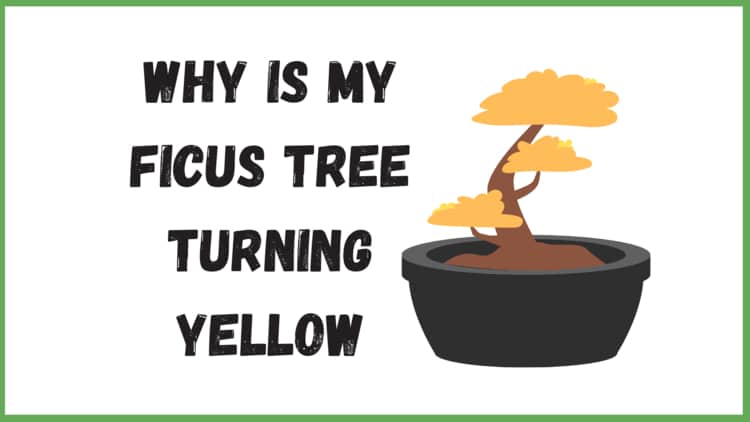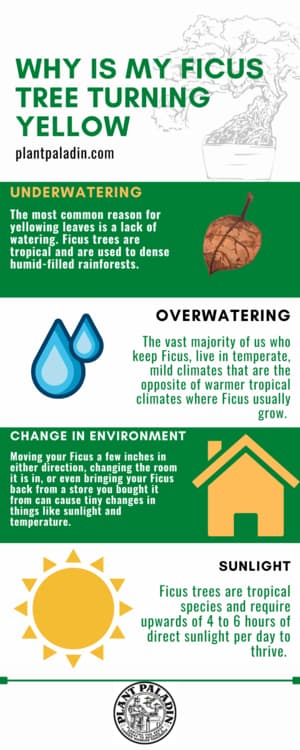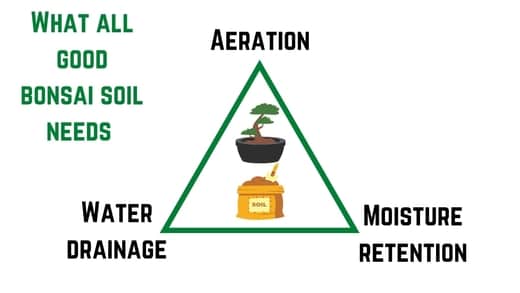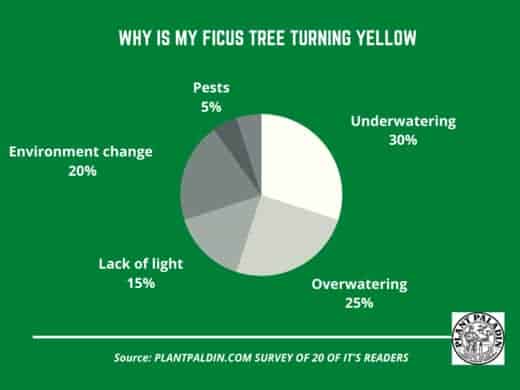This website is supported by its readers. If you click one of my links I may earn a commission. I am also a participant in the Amazon affiliates program and I will also earn a commission from qualified purchases.

One of the things I’ve recently been noticing about a few of the Ficus trees I keep is that the leaves have started to turn yellow. As such, I wanted to make sure that there were no long-term consequences of yellow leaves. This got me asking, why is my Ficus tree turning yellow.
Ficus tree leaves most commonly turn yellow due to poor placement of the tree, underwatering, overwatering, dry air, lack of sunlight, and pest or fungal infestation. Yellow leaves on Ficus trees in most scenarios can be reversed.
So what are the most common causes of Ficus trees turning yellow? And how do you counteract this? Keep reading to find out more exactly why is my ficus tree turning yellow!
Just a quick heads up, over the past three years of running Plantpaladin, hundreds of people have asked for product recommendations. As such, You can find my favorite indoor bonsai tree here (link takes you to Bonsaiboy), my favorite outdoor bonsai tree (link takes you to Bonsaiboy), or have a look at all the products I recommend here.
Why is my Ficus tree turning yellow?
Ficus trees make for excellent indoor trees in most climates. Their dense leafy canopies and interesting trunk development in sub-species like Ficus Benjamina make for an excellent all-around tree that is easy to care for. It’s one of the reasons why so many of us keep other subspecies such as Ginseng Ficus trees for bonsai.
Whilst Ficus trees are very easy to care for, they do have some problems – most commonly the development of yellowing in the leaves.
This recently happened to me with both my Ficus bonsai and other general Ficus trees I keep around the house.
As such, I got in touch with a few tree experts, visited my local botanical gardens, tried to uncover the problem myself, and even asked 20 plant paladin readers to get to the bottom of why is my Ficus tree was turning yellow.
To summarize:
Why ficus trees turn yellow – quick facts
- Yellowing leaves on a Ficus tree can be caused by several factors
- The most common reason why leaves will turn yellow is underwatering or overwatering of a tree.
- With too much or too little water your tree has to work overtime to regulate itself, this means the eventual yellowing and then dropping off of leaves as your tree tried to optimize itself for photosynthesis.
- Another cause of yellowing leaves is moving your tree – Ficus is a tropical tree and so does not like a change in environment.
- If you have recently purchased or moved your tree, it is not uncommon for yellowing leaves to occur due to stress.
- Yellowing leaves can also be caused by several other reasons such as a pest or insect infestation, lack of humid air, not getting enough sunlight, or fungal infection.
- Luckily a lot of the symptoms of yellowing leaves can often be reversed.
To explain more about why your Ficus is tuning yellow, let’s explore the core reason and resolutions below:

Underwatering
The most common reason for my ficus tree turning yellow was underwatering.
Ficus trees are tropical and are used to dense humid-filled rainforests.
As most of us keep these trees indoors, it is all too common for these trees to dry out in our homes – especially if you keep the thermostat high year-round.
The best way to avoid overwatering your Ficus is just to regularly check your topsoil to see if it needs watering.
If the topsoil is dry to touch, then water your Ficus.
During hotter periods such as the late spring and summer, I would touch the topsoil a few times per day when your tree is more likely to dry out.
As a general rule of thumb, you will want to wait until the top 1 inch of potting soil is dry to touch before watering.
For some Ficus varieties however such as Ginseng Ficus used for bonsai trees, then you might need to touch your topsoil more frequently.
To overcome this then, come up with a regular daily schedule where you will touch your topsoil to ensure if it needs watering or not.
If you have waited too long to water your tree and it is desperate for water, then use bottom watering, where you keep the base of your tree submerged in water for 30 minutes where your roots can directly access the water.
Overwatering
Similar to the point above, whilst underwatering is the most common cause of yellowing leaves, overwatering too can cause yellowing of leaves.
The vast majority of us who keep Ficus, live in temperate, mild climates that are the opposite of warmer tropical climates where Ficus usually grow.
This can lead to a lot of us thinking we need to overcompensate and give our Ficus more water.
Doing so will just lead to your soil becoming waterlogged and will result in other issues such as root rot.
Again come up with a regular schedule to touch the topsoil of your tree and only ensure that you water if the topsoil is dry.
Now if you have overwatered your tree, fret not as there are a few things you can do to overcome this including:
- Planting your Ficus in the ground – The soil will help absorb some of the excess water
- Use a hairdryer to dry out the roots – This will prevent things like root rot.
- Increase the temperature where you keep the tree.
Improper watering technique
Believe it or not, you can be watering your Ficus tree the right amount and still have yellowing leaves due to improper watering technique.
If you are inconsistent with your watering then your Ficus will not be able to adapt causing excess stress and yellowing leaves.
The temperature of your water can also cause yellowing leaves.
If the water is too cold, it can cause a shock in the roots and leaves of your tree.
If you use tap water too much to water your tree then this can change the PH level of your soil impacting and causing the yellowing of the leaves of your tree.
Another consideration would be not taking note of the seasons.
Due to the cooler air in winter more ice can form on the leaves and branches of your tree.
Due to this, you will not need to water your Ficus as frequently because the frost and ice build-up will help keep your tree moist.
How much should you water your Ficus to avoid yellowing leaves
Aim to water your Ficus two to 3 times per week during the spring, summer, and fall. Aim to water a Ficus once per week in the winter. Use neutral water or rainwater for best results and only water when the topsoil is dry.
Change in environment
Ficus trees, regardless of the sub-species like consistency.
This consistency has to mean consistent watering, temperature, sunlight, and many other factors we will go into.
Whilst it might seem counterintuitive then, doing something as simple as moving your Ficus a few inches in either direction, changing the room it is in, or even bringing your Ficus back from a store you bought it from can cause tiny changes in things like sunlight and temperature.
These changes will cause stress on your leaves and result in your ficus tree turning yellow.
To prevent your Ficus then from having yellow leaves due to this, aim to keep it in one solid location that doesn’t require a lot of movement.
If you can afford to invest in a greenhouse I would do so.
alternatively, keeping your Ficus on a bench indoors or on a window sill that does not move that often will be your best bet.
I find that having a little bit of foresight and taking note of where you will keep your Ficus before purchasing it will also work well.
After a week or two, the yellowing leaves should have stopped if they are caused by stress from moving your tree.
Temperature change
As mentioned above, a change in environment and location can cause yellowing leaves.
One of the biggest side effects of changing the location of your Ficus will be an inconsistent temperature.
For example. Let’s say you keep your Ficus indoors, and live in a mild climate.
During the spring and summer, you will be able to manage the indoor temperature perfectly fine.
In the fall and winter, however, your house will start to cool down causing your tree to drop leaves.
What is even worse is that this problem can be exacerbated by using things like central heating during the winter when your Ficus will go from freezing at night to boiling during the time of day when you keep the heating on.
Regulating and keeping a consistent temperature will be vital then to prevent your Ficus from getting yellow leaves.
To maintain this, aim to keep the thermostat at the same temperature year-round – 20 to 25 degrees celsius works best for Ficus.
Ficus trees prefer warmer conditions and thrive when benign kept above 60 degrees Fahrenheit as a minimum to 75 degrees Fahrenheit.
Dry soil
Good potting soil for Ficus requires three main things:
- Moisture retention
- Moisture flow
- Good aeration

Miss any one of these three key elements and your Ficus will not be able to thrive.
Not most good potting soils such as Peat soil or Catus soil will have these in spades.
If however, your soil mix does not have good moisture retention and too much moisture flow this can cause dry soil.
Dry soil will in turn cause your roots to dry up, making your Ficus not as efficient as picking up nutrients from the soil.
This will lead to a dehydrated tree that has yellowing leaves that will eventually drop off.
To counteract this, ensure your soil mix meets the triumvirate features of a good soil mix.
To specifically stop dry soil, check your topsoil daily if it is dry.
Consider investing in a pot that also has enough drainage holes and not too many so that all the water falls out.
To give you an idea the flowchart below should help:
Size Classification | Size inches | Number of penny-sized holes | Number of pencil-sized holes |
Keshitsubo | 1 to 3 inches | 1-2 | 0 |
Shito | 2 to 4 inches | 1-2 | 0 |
Mame | 2 to 6 inches | 2 | 2 |
Chohin | 5 to 8 inches | 2 | 2 |
Kumono | 6 to 10 inches | 2 | 2 |
Katade-mochi | 10 to 18 inches | 2 | 3 |
Chiu or Chumono | 16 to 36 inches | 2 | 4 |
Dai or Omono | 30 to 48 inches | 3 | 6 |
Hachi-uye | 40 to 60 inches | 4 | 8 |
Imperial | 60 to 80 inches | 6 | 8 |
Not enough sunlight
Another major reason why your Ficus might be turning yellow is that it’s not getting enough sunlight.
Ficus trees are tropical species and require upwards of 4 to 6 hours of direct sunlight per day to thrive.
A lot of us sadly will keep our Ficus indoors away from a window where it is getting close to this amount of direct light.
Without sunlight, your Ficus will not be able to feed itself through photosynthesis and priority should be placed on getting your Ficus as much sunlight as possible.
Now if you live in conditions that do not have a lot of good sunlight, then consider investing in an artificial grow light to ensure your Ficus gets its sunlight needs.
Wrong fertilizer
Ficus trees need to be fertilized often.
That being said, excessive fertilization, more than once per week, can cause a large amount of salt to build up in the soil of your tree.
Watering your Ficus with too much tap water can change the PH level of your soil.
This excess fertilizer then will cause your trunk and its roots to start to burn.
This will be passed on to the leaves of your Ficus which will turn yellow and ultimately fall off.
To prevent this from happening ensure you only fertilizer your Ficus during the spring and the summer, aiming to do so no more than twice per month.
You should also only use natural fertilizer that has a balanced NPK ratio to prevent burning.
Dry air
Another cause of yellowing leaves can be dry air.
Whilst we often think that a draft of air can be good at cooling down our trees the truth is that a light breeze of dry air often has a wind chill factor that can cause trees to dehydrate.
This will cause underwatering and once again lead to yellowing leaves.
At first, you might not think this is a problem due to keeping your tree indoors but you will be mistaken.
Even small things such as keeping a window open near your tree, having the air conditioning on, or going in and out of the room where your Ficus is based too often can cause this to occur.
To prevent then, aim to keep the window closed and keep your Ficus away from drafty areas in your house such as near a chimney breast or door.
Repotting your tree
Regardless of if you keep your Ficus for bonsai or just keep it around the house in general, Ficus, like all trees grow.
As the years go by then, repotting will be necessary to ensure the roots of your tree stay healthy.
Repotting your tree however can be one of the most stressful practices undertaken.
This stress can cause your tree leaves to turn yellow.
If then you have recently remitted your tree, this could be the reason why your leaves are turning yellow.
To prevent, ensure you maintain good repotting aftercare, check your tree daily in the first few days after repotting.
As a rule of thumb, Ficus will need to be repotted once every 2 to 3 years.
Ficus that you keep for bonsai however can be repotted much less frequently due to them growing much slower.
Pests
If your tree is in poor health then this will cause your leaves to turn yellow.
Bugs such as Aphids, Scale, Spider-mites, and Caterpillars all love to eat/nest in the canopies of Ficus.
This can cause a lot of stress on the leaves as they use them for sustenance.
Especially if your Ficus produces figs/berries or seeds that attract pests.
Doing so will cause the leaves to turn yellow.
To prevent these bugs from attacking your tree, consider investing in a pesticide.
Now, this can either be natural, through the use of predatory wasps and ladybugs, or chemical means such as soapy water or neem oil.
Fungus
Similar to pests, fungal and mold infections, often caused by overwatering can also cause white spots, white powder, and even yellowing leaves on your Ficus.
Fungal infections most commonly have yellow spots on the leaves of your tree.
Thankfully this can be avoided by using a good fungicide to prevent this.
A simple answer but a common reason if you are asking yourself why is my ficus tree turning yellow.
Tree age
Finally, the age of your tree can also impact if your Ficus tree will turn yellow.
Fics trees that are not kept for bonsai purposes will typically live between 20 and 30 years.
The older the tree gets, the less efficient it becomes at photosynthesis.
As such, if your tree is older, it may be yellowing and dropping its leaves as it prepares for its twilight years.
Will yellow Ficus leaves turn green again?
Once you have identified the cause of why your Ficus leaves are turning yellow, they can successfully be turned back green. For example, if you find that overwatering is causing your yellowing leaves, once your Ficus has dried out, its leaves will return to bright green after a few weeks.
Do Ficus branches turn yellow?
Ficus branches tend not to turn yellow, instead, it is most commonly Ficus leaves that turn yellow or brown. This is most commonly due to underwatering and overwatering. Ficus branches can sometimes get white spots which are typically caused by mold or pest infestation.
What other tree leaves turn yellow?
Chinese Elm, Jade, Oak, Olive, Juniper, Scots Pine, Willow, and Apple Tree leaves all commonly turn yellow due to underwatering. overwatering and lack of sunlight. This problem is common amongst almost all tree varieties.
Survey on why Ficus trees are turning yellow?
Finally, I undertook a quick survey of 20 plant paladin readers and asked them the same question we have answered today: Why is my Ficus tree turning yellow?
Here were the results:

How to care for a Ficus
The table below will summarize the basic steps to caring for a Ficus:
Ginseng Ficus Bonsai tree Requirements | Explained |
Water | Once per day in the spring-summer or if kept indoors. Once per week if kept outdoors during the winter. Only water if dry to touch. |
Sunlight | 4 hours of direct sunlight in the summer. LED grow light can also be used. |
Temperature | Between 60 degrees F and 100 degrees F |
Fertilizer | Fertilize 18 times per year, twice per month between spring and summer. Once per month in the fall and winter |
Repotting | Once every 2 to 3 years in the first 10 years. You can then report once every 5 years |
Placement | Can be placed outdoors in direct sunlight or indoors in a bright spot. |
Wire type | Both copper and aluminum wire can be used. |
Time to grow from scratch into maturity | 8 to 12 years to reach full maturity |
Potting soil | An inorganic Akdama, volcanic ash soil mix works best. |
Growth type | Slow growing, averaging 3-5 inches per year |
Size | Average store-bought trees are size is one or two-handed bonsai trees - 3 to 10 inches in size, 2 to 8 inches wide |
Lifespan | 50 to 150 years |
Fruit | figs |
My top picks for the gear you will need!
So like I mentioned earlier, over the past three years of running PlantPaladin, hundreds of people have asked me for my recommendations on the best bonsai gear on the market.
Having spent thousands of dollars on bonsai items these past few years and tested at least 100 bonsai-specific products, I’ve listed my favorite products below – All of which I highly recommend and think you can get great value.
They can purchase directly by clicking the link to take them to Amazon.
Bonsai Tool Set: One of the significant challenges I’ve had is finding a toolset that was not only durable but didn’t break the bank. SOLIGT has recently developed a fantastic bonsai tool set that covers all the tools you need to trim, prune, and repot your trees. – You can grab it here.
Complete Bonsai Set: Many of you will want to grow your bonsai trees entirely from scratch, but finding the varicose seeds, pots, and other items in one place can be challenging. Leaves and Sole then have created a complete bonsai set that I’ve personally used that ticks all the boxes. You can grab it here.
Bonsai wire: The number of times I’ve run out of wire for my bonsai or purchased cheap bonsai wire that doesn’t do the job is embarrassing for me to admit. After a lot of trial and error, I found that using Hotop’s aluminum bonsai wire is one of the best options on the market. This can easily be used for both indoor and outdoor bonsai. You can grab it here.
This post was written by Fehed Nicass who has been passionate about bonsai for over 3 years. He currently resides in the UK and works in sales.
